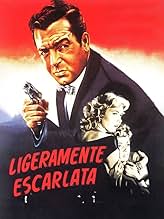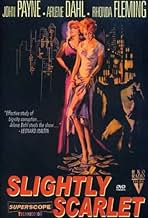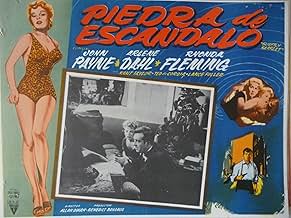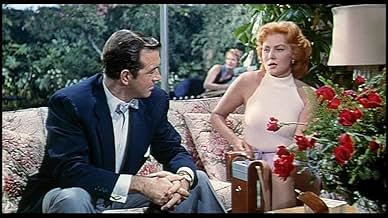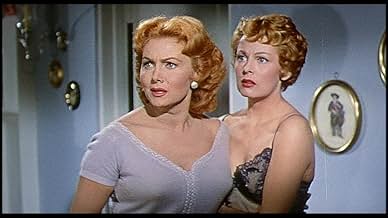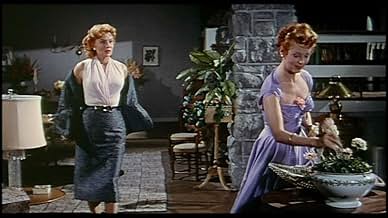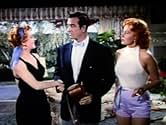NOTE IMDb
6,5/10
1,3 k
MA NOTE
Un affairiste urbain s'implique dans le crime organisé, la vie politique locale et corrompue et la greffe tout en tombant amoureux de la fiancée du maire nouvellement élu.Un affairiste urbain s'implique dans le crime organisé, la vie politique locale et corrompue et la greffe tout en tombant amoureux de la fiancée du maire nouvellement élu.Un affairiste urbain s'implique dans le crime organisé, la vie politique locale et corrompue et la greffe tout en tombant amoureux de la fiancée du maire nouvellement élu.
Fred Aldrich
- Policeman
- (non crédité)
Murray Alper
- Hood
- (non crédité)
Joanne Arnold
- Gloria
- (non crédité)
Albert Cavens
- Man at Campaign Headquarters
- (non crédité)
Ellen Corby
- Martha
- (non crédité)
Paul Cristo
- Man at Campaign Headquarters
- (non crédité)
Sam Flint
- Man at Campaign Headquarters
- (non crédité)
Curt Furberg
- Man at Campaign Headquarters
- (non crédité)
Rudy Germane
- Hood
- (non crédité)
Frank Gerstle
- Dave Dietz
- (non crédité)
Kenneth Gibson
- Man at Campaign Headquarters
- (non crédité)
Histoire
Le saviez-vous
- AnecdotesArlene Dahl offered to play cards with Rhonda Fleming to determine who would be the first on the poster. Dahl won the game, and in return demanded that Fleming be the first in the credits of the film. Fleming was very touched by this gesture and the two actresses became good friends.
- GaffesVery early in the film, just after Dorothy Lyons has been released from prison, Ben Grace is in police Lt. Dietz's office discussing her. The lieutenant is perusing Miss Lyons' criminal file which the viewer can briefly view. At the top of the document a spelling error displays her name as "Dorthy Lyons".
- Citations
Solly Caspar: Let's see if we can beat him down.
[after throwing a body out of an upper story window]
- ConnexionsFeatured in Saving Cain: Robert Blees on 'Slightly Scarlet' (2009)
- Bandes originalesFor He's A Jolly Good Fellow
(uncredited)
Traditional
Heard at the announcement of the election results
Commentaire à la une
Anyone remotely interested in cinematography and art direction should see this. John Alton, chiefly famous for his work in black and white, here switches to livid colour and achieves some of the most daring and moody effects ever known in colour films. This was a decade before 'flashing' the film became popular (a technique developed by Freddie Young, who told me all about it at the time he began the trend, with Lumet's 'Deadly Affair'). Everything here is so vivid, and the games played with colour in choice of sofas, walls, carpets, not to mention hair, are so intense, that the film is really chiefly of interest for all of that. Alton had to work only with variations in lighting, not with film processing possibilities. What he did is incredibly audacious, worth watching over and over just to study it. He has whole figures in shadow, and faces often are eclipsed by darkness in a bright room. It is really an incredibly dazzling display of virtuosity and genius. The two lead gals have matching hair, which plays well on the sets. Rhonda Fleming was a notorious strawberry blonde, and although I seem to recall that Arlene Dahl was really a normal blonde and presumably had her hair died to match Fleming's for this film, here they are very like the sisters they play indeed, with matching peachy hair and bright blue eyes. It is all a symphony of light and dark and colour combinations, like a modernist painting. The story is tepid, diluted from a James Cain novel about city corruption and crime. Arlene Dahl is not very convincing as a kleptomaniac siren who is supposed to be deeply psychologically disturbed (that part only comes out at the end, though we know about the thefts from the beginning, as the film begins with her coming out of prison). Rhonda Fleming swings her hefty bust around with confidence, and glares with her blue eyes at people as she challenges them, which with her fiery nature she does a lot. Into this mix comes a very seedy character played by John Payne, who by this time was really getting a little too old for such roles, nice fellow though he was. However, a sufficiently noirish tale ensues which is worth watching, though it is not a proper film noir, but merely has certain elements of that left, as the mid-1950s were asserting themselves, and people were getting more interested in Debbie Reynolds and Doris Day, and the War was a fading memory, and even the Korean War was passé by this time. Yes, things were changing, people were getting cheerier and more bourgeois by the minute, and gloom was no longer so popular, or must be relegated to horror films instead. Time to lighten up! So this is an interesting historical curiosity, a lingering shadow cast over the smiling face of a complacent Middle America which was just settling down to a nice long afternoon nap which would last until the sixties.
- robert-temple-1
- 24 oct. 2009
- Permalien
Meilleurs choix
Connectez-vous pour évaluer et suivre la liste de favoris afin de recevoir des recommandations personnalisées
- How long is Slightly Scarlet?Alimenté par Alexa
Détails
- Date de sortie
- Pays d’origine
- Sites officiels
- Langue
- Aussi connu sous le nom de
- Slightly Scarlet
- Lieux de tournage
- Sociétés de production
- Voir plus de crédits d'entreprise sur IMDbPro
- Durée1 heure 39 minutes
- Rapport de forme
- 2.00 : 1
Contribuer à cette page
Suggérer une modification ou ajouter du contenu manquant

Lacune principale
By what name was Deux rouquines dans la bagarre (1956) officially released in India in English?
Répondre


